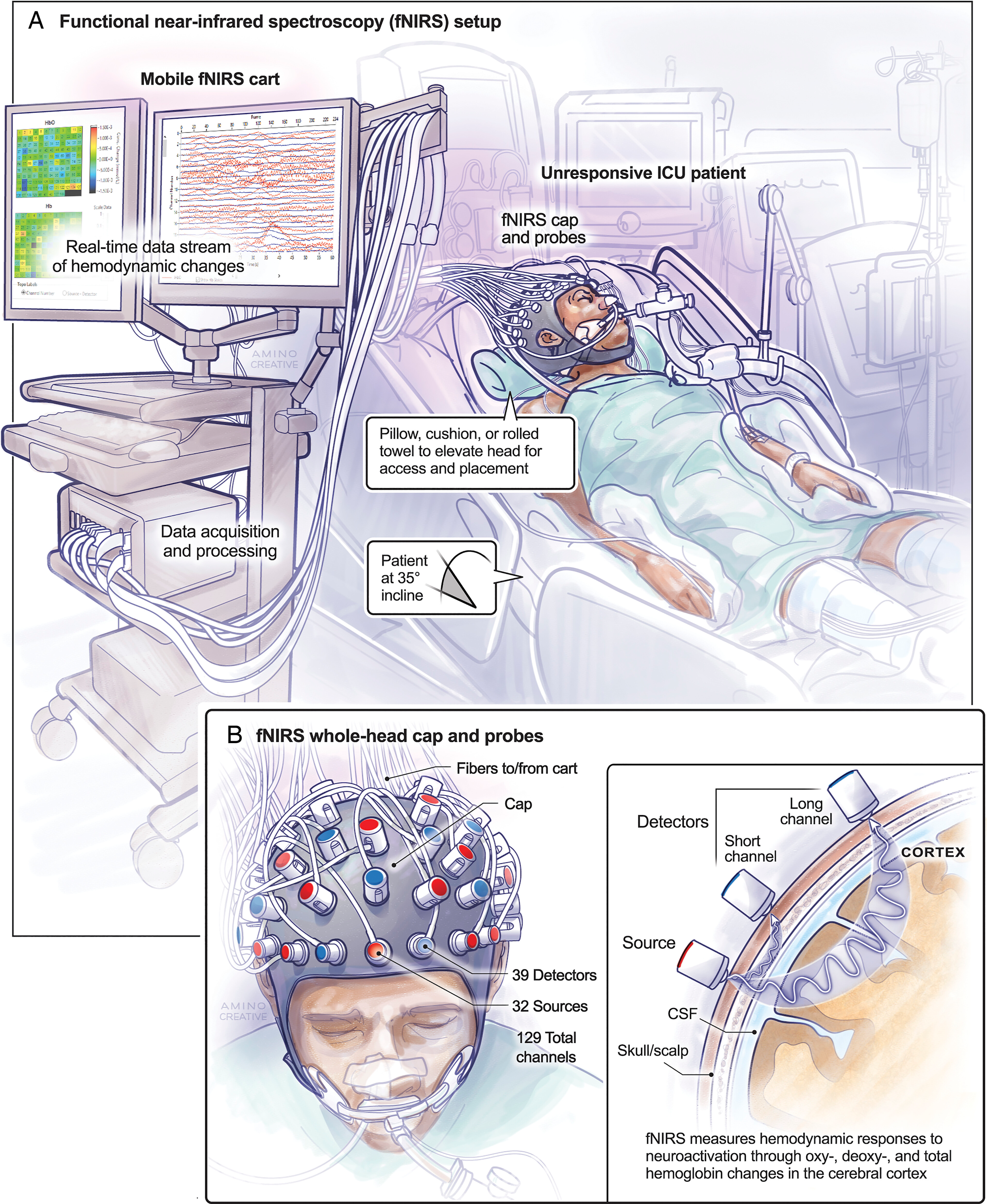BCI & Neurofeedback with FNIRS
Brain-Computer Interface (BCI)
Brain-Computer Interface (BCI) refers to the communication between the brain and a computer that may be used to interpret the real-time activity of the brain through signal processing and machine learning. Such communication offers a great gamut of possibilities for medical based research, for example the development of prosthetics controlled by motor imagery, the calibration of cochlear implants, or the improvement of communication in patients with amyotrophic lateral sclerosis.
Given the technology's great performance in the presence of muscle movement, combined with its portability, and ease of application, fNIRS presents itself as an optimal candidate to acquire reliably representative cortical brain signals as inputs to a BCI investigation.
Neurofeedback
Neurofeedback is the process of using information obtained from online brain activity to allow a subject to self-regulate a task. With the advent of fNIRS and its capability of measuring two or more subjects at the same time in realistic environments, the neurofeedback possibilities based on hemodynamic states have been widely expanded. This is depicted on the schematic to the right. Research fields that may strongly benefit from Neurofeedback are social interaction, stroke rehabilitation and emotion regulation.
Data Streaming
An essential pre-requisite for both BCI and Neurofeedback is the possibility of streaming raw data and trigger markers from both an acquisition computer and a presentation computer. This ability allows for real-time processing of the raw data, which is essential for feature extraction used in BCI as well as conversion to hemodynamic states used as input for the Neurofeedback module. A general schematic is shown below:
The real-time data stream, as depicted above, can be easily achieved with the NIRx Software Development Kit (SDK), which provides a dynamic library that allows the user to communicate with the acquisition software.
*Users without programming knowledge can also easily benefit from SDK with the examples available.
Additionally, NIRx offers synced streaming to the open-source software Lab Streaming Layer (LSL). Similar to the SDK, LSL provides users with an available list of apps and scripts in numerous programming languages.
Use Cases
Turbo Satori: Comprehensive Real-Time fNIRS Analysis Software
Turbo-Satori is an advanced real-time analysis software for fNIRS data. It allows for fast, result-driven high-quality fNIRS research. Turbo-Satori is developed by Brain Innovation, exclusively for NIRx fNIRS instruments. Optimized for user-friendly real-time fNIRS brain computer interface (BCI) and neurofeedback research, Turbo-Satori integrates with NIRStar or Aurora fNIRS acquisition software without the need for any additional hardware. To learn more, click here.
Webinar: fNIRS and Brain Computer Interfaces for Communication
Dr. Noman Naseer has over 50 peer-reviewed publications in the field of fNIRS-based BCI. In this webinar, he shares his expertise on signal acquisition and processing for fNIRS-BCI. A practical demonstration of raw data analysis, feature extraction and classification using MATLAB is also given.
Click below to learn more on various applications with NIRS:
- fMRI-concurrent fNIRS
- EEG-concurrent fNIRS
- TMS-concurrent fNIRS
- Combining eye-tracking with fNIRS
- Using NIRS to conduct child and infant measurements
References
[1] DiStasio, M.M., and Francis, J.T., “Use of frontal lobe hemodynamics as reinforcement signals to an adaptive controller”, PLoS ONE 8(7), e69541, doi:10.1371/journal.pone.0069541 (2013).
[2] Khan, M.J., Hong, M.J., and Hong, K.-S., "Decoding of four movement
directions using hybrid NIRS-EEG brain-computer interface." Frontiers in
human neuroscience 8(244), 1, doi:10.3389/fnhum.2014.00244 (2014).







